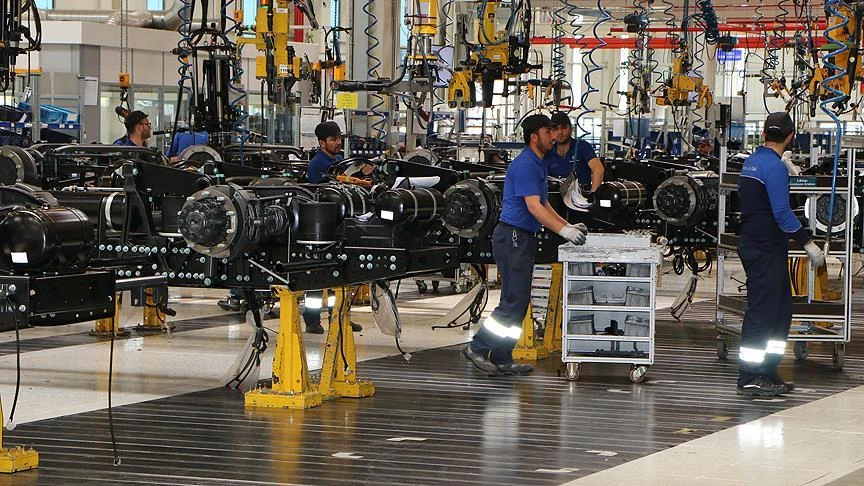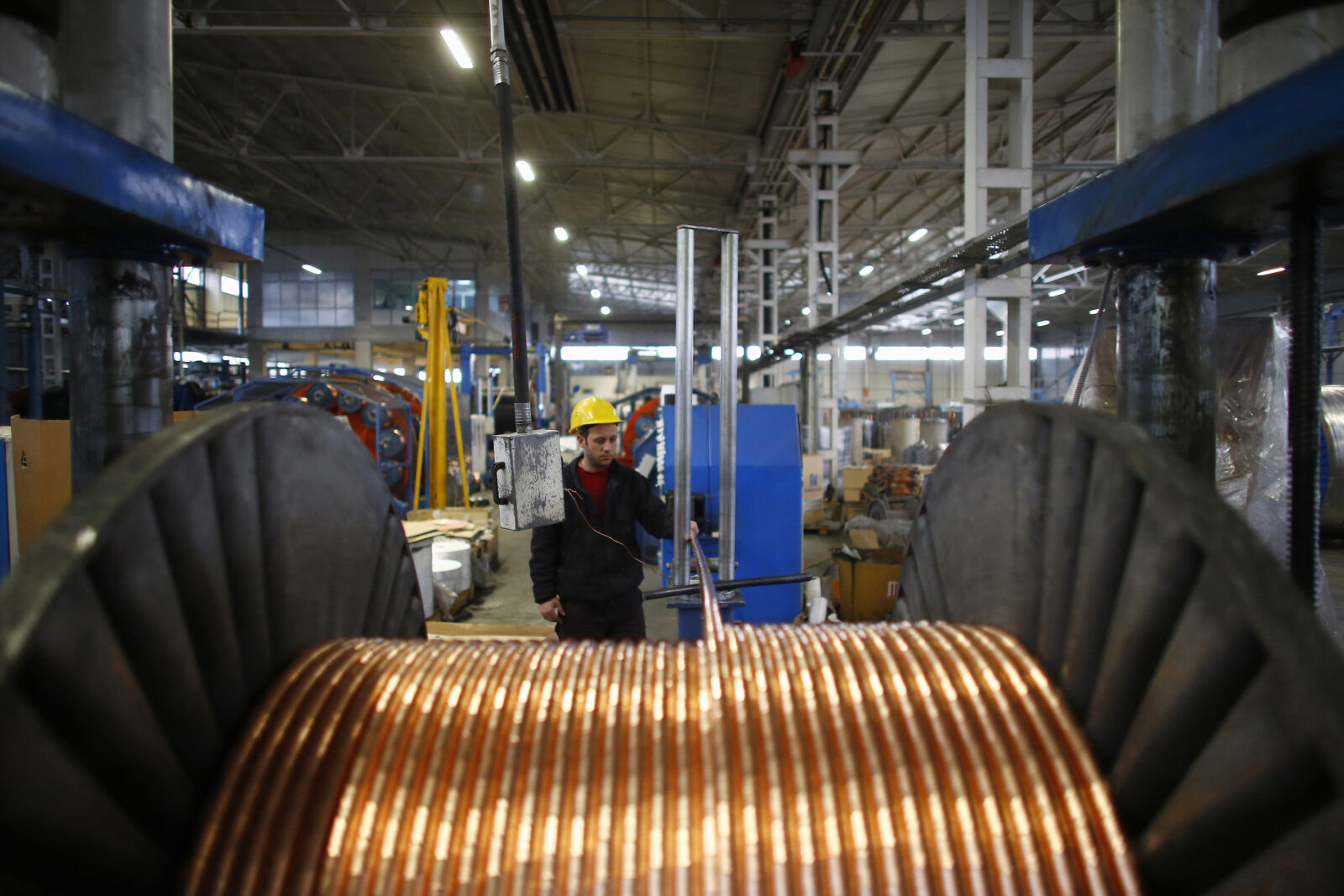Türkiye’s industrial workers produce more, earn less: Study
 Manufacturers continue to justify this widening gap with excuses such as export competition, further exacerbating income inequality.
Manufacturers continue to justify this widening gap with excuses such as export competition, further exacerbating income inequality.
Türkiye has been undergoing significant economic shifts over the past few decades, with major repercussions on income distribution. Economic policy changes implemented in 2021 led to one of the most severe income distribution crises in the country’s history. The restructuring of economic relationships between labor and capital during times of crisis has been a defining feature of Türkiye’s industrial sector. A recently published comprehensive study by academic Osman Berke Duvan analyzing data from Türkiye’s 1,000 largest industrial enterprises between 1997 and 2023 highlights the structural shifts in income distribution and the moments of significant economic disruption.
Findings reveal that while the largest industrial companies in Türkiye have seen record profit increases over the past 25 years, the share of industrial workers in these earnings has consistently declined. Between 2020 and 2022, the income distribution crisis further exacerbated this trend, placing an even greater financial burden on workers. As in many parts of the world, the share of labor in national income has been shrinking in Türkiye, raising concerns about deepening economic inequality.
Productivity gains, wage stagnation
One of the most striking findings of the research is the widening gap between productivity growth and wages. Data from Türkiye’s largest industrial enterprises show that while labor productivity in the top 1,000 industrial firms increased by an average of 4-4.2% annually between 1997 and 2023, real wage growth lagged significantly behind at just 0.7-1.1% per year.
This gap widened further after the 2001 economic crisis. Between 2002 and 2009, labor productivity in the top 500 industrial firms grew at an annual rate of 6.5%, whereas real wages increased by only 1.2%. In the second-tier 500 firms, productivity grew by 6.6%, but wage increases were a mere 0.3%. This pattern underscores that the benefits of rising productivity have largely been absorbed by business owners and capital investors, rather than being equitably shared with the workforce.

Worsening inequality during the pandemic
The COVID-19 pandemic and its economic consequences further widened the income gap between employers and workers. Between 2020 and 2022, productivity in the top 500 industrial firms increased by an average of 13.4% per year, but real wages for workers declined by 5.5%. A similar trend was observed in the second 500 firms, where productivity rose by 5.8%, yet workers’ wages dropped by 6%.
This period also saw corporate profits reach record highs. In the top 500 industrial companies, profit margins surged from 11.3% in 2019 to 17.5% in 2021. The findings indicate that the pandemic exacerbated existing inequalities, as companies boosted efficiency and profits, while employees faced declining real incomes amid rising inflation and economic uncertainty.
The impact of economic policies on workers
Türkiye’s economic strategy, dubbed the “Turkey Model,” was introduced in 2021, marked by significant interest rate cuts and an attempt to stimulate growth. However, this approach contributed to high inflation and intensified income disparities. By 2022, the share of wages in Türkiye’s Gross Domestic Product (GDP) fell to 24%, marking the lowest level in recorded history, while capital’s share rose to an unprecedented 67%.
Similarly, data from Türkiye’s largest industrial firms reveal a stark contrast in income distribution. In the top 500 industrial companies, labor’s share of value-added fell to 26.9%, the lowest level since 1982, signaling an alarming trend where corporate profits continue to rise at the expense of workers’ wages.

The shrinking wage gap between average salaries and minimum wage
Another key finding of the study is the gradual convergence of average wages toward minimum wage levels. In 2001, the average salary in Türkiye’s top 500 industrial firms was 5.2 times the minimum wage. By 2016, this figure had dropped to 2.7 times. A similar pattern emerged in the second-tier 500 firms, where average wages declined from 3.2 times the minimum wage in 2001 to just twice the minimum wage in 2016.
This phenomenon, often referred to as the “minimum wage squeeze,” has been widely discussed by economists. Experts such as Nazim Tamkoc, Orhan Torul, Aziz Celik, and Aykut Kibritcioglu have highlighted this issue as a key indicator of deteriorating labor conditions, warning that as wages become increasingly compressed, middle-class job stability and purchasing power could be at risk.
While our competitors pay monthly wages between $100 and $300, we cannot compete with them when our per capita annual income stands at $15,000.
Aegean Exporters’ Associations Coordinator Chairman Jak Eskinazi (for the textile sector)
The future of industry
Türkiye’s industrial sector has witnessed rapid growth and rising productivity over the past 25 years, yet these gains have not translated into better wages for workers. Instead, income disparities have widened, particularly in the aftermath of economic crises and the COVID-19 pandemic. The country’s economic policies, favoring capital accumulation over wage growth, have contributed to a historical low in labor’s share of national income.
Turkish workers have long complained about this disparity, yet no effective steps have been taken to resolve the issue. Manufacturers continue to justify this widening gap with excuses such as export competition, further exacerbating income inequality.



